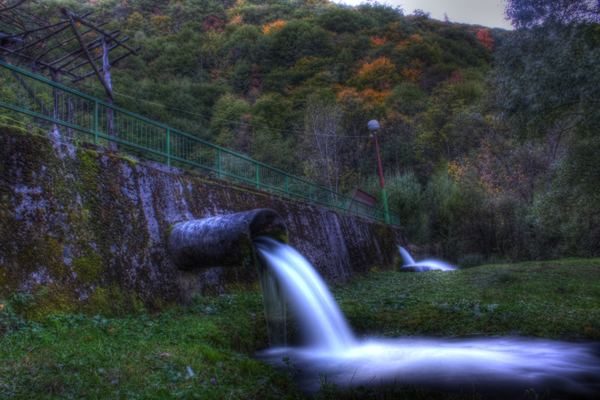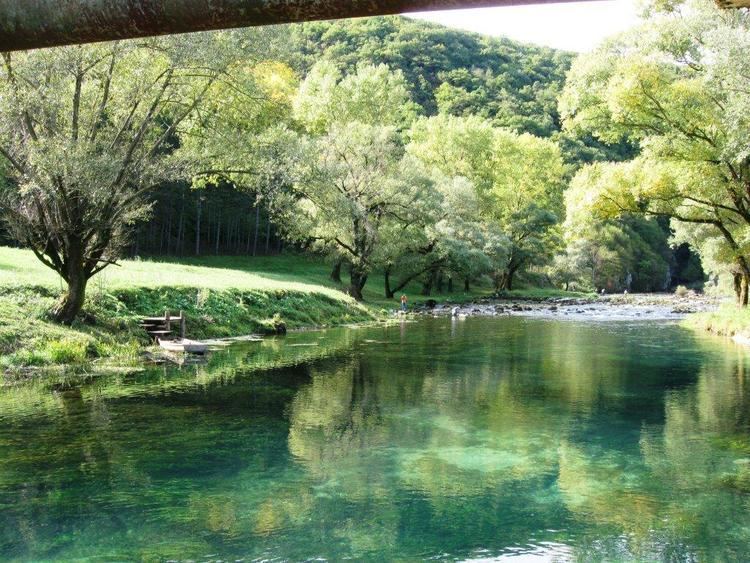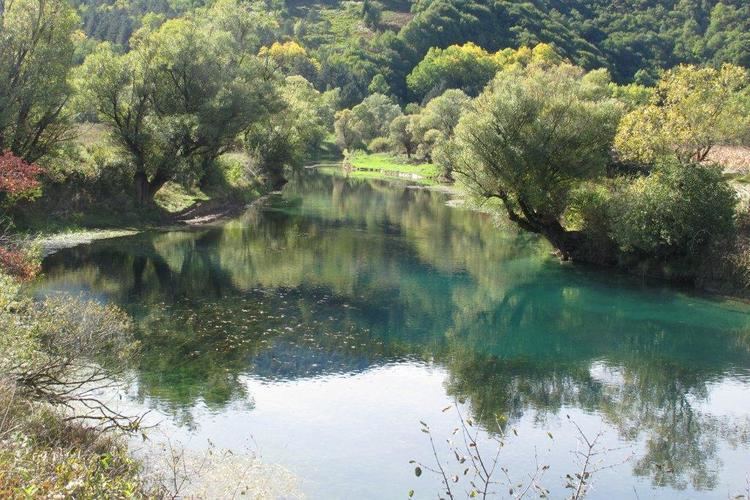Area 23.36 km2 Mayor Sasa Mirkovic | District | |
 | ||
Map of Klokot
Klokot (Serbian Cyrillic: Клокот. Albanian: Kllokot / Kllokoti) is a town and municipality located in the Gjilan District of southeastern Kosovo. It is a Serbian enclave situated in the geographical region of Kosovo Pomoravlje. As of 2011, Klokot has an estimated population of 2,556 inhabitants.
Contents
- Map of Klokot
- Klokot banja petrovdan
- History
- 2010present
- Settlements
- Demographics
- Ethnic groups
- Economy
- Politics
- Public services and infrastructure
- References

After the 2013 Brussels Agreement, the municipality became part of the Community of Serb Municipalities.

Klokot banja petrovdan
History
In August 2003, explosive devices planted in Klokot destroyed five Serb houses, with several injuries, including two American KFOR soldiers.
2010–present
The municipality of Klokot was officially established on 8 January 2010, previously being part of the municipality of Vitina. The seat of the municipality is in the town of Klokot. Although the new municipality is primarily inhabited by Serbs, this move was not recognized by the Government of Serbia, which does not recognize the Republic of Kosovo, and therefore its administrative changes. The municipality was formed based on the Ahtisaari plan for decentralization of Kosovo which called for the establishment of a municipality with Serbian majority within the Vitina municipality.
After the 2013 Brussels Agreement between the governments of Kosovo and Serbia, Serbia recognized the municipalities and Kosovo's governance of the territory, and agreed to create an Community of Serb Municipalities, which will operate within the Kosovo legal framework.
Between 2014 and March 2016, 30 Serb families with 124 members have left the municipality. In December 2016, two local Serb youngsters were stabbed by a group of six Albanians. The week before, a house of a Serb returnee family had been burnt down.
For 2016, the estimated budget for the municipality was 800,000 euros.
Settlements
The municipality has a cadastral area of 2,336 hectares (5,770 acres). The municipality includes the town of Klokot and three villages:
Demographics
The number of inhabitants before the Kosovo War (1998–99) stood at 5,000. According to the 2011 census done by the Government of Kosovo, the municipality of Klokot has 2,556 inhabitants. However, these results should be taken with caution due to partial boycott by Kosovo Serbs.
The town of Klokot had around 1,500 residents before the Kosovo War, and around 1,064 as of 2011.
Ethnic groups
The municipality of Klokot is ethnically mixed, consisting of Kosovo Albanians (53.3%), Kosovo Serbs (46%) and other minorities. The town of Klokot is consisted of Kosovo Serbs (616, 57.9%), Kosovo Albanians (446, 41.9%) and two others.
The ethnic composition of the municipality is as follows:
Economy
The economy of the municipality of is mainly based on natural resources (mostly mineral water), tourism (two private spas), agriculture and small trade businesses. Klokot has some important hot-water springs that get up to 32 °C (90 °F). There are 29 registered private businesses operating in the municipality.
Politics
The first (and most recent to day) municipal elections were held on 15 November 2009. Although Serbian Government did not recognize those elections, 25,4% of local voters, mostly Serbs, did participate in the elections. Serb Saša Mirković was elected mayor. Out of 15 members of the municipal assembly, 10 were elected from the Serb Independent Liberal Party, and 5 from the Albanian Democratic League of Kosovo.
Public services and infrastructure
There are three elementary schools in the municipality with 599 students and 33 teachers, one secondary school with 147 students and 13 teachers and one kindergarten with 15 children and 2 teachers (As of 2013). Two elementary schools follow Serbian curricula, while one follows Kosovo curricula. The St. Sava Elementary school in Klokot is attended by 250 students (As of 2001) and the secondary school is located in Vrbovac.
The municipality has four Serbian Orthodox churches. The church in Grnčar was mined and destroyed by the Albanians during the Kosovo conflict, and was later fully reconstructed. There is a mosque in village of Mogila which was not damaged during the conflict.
